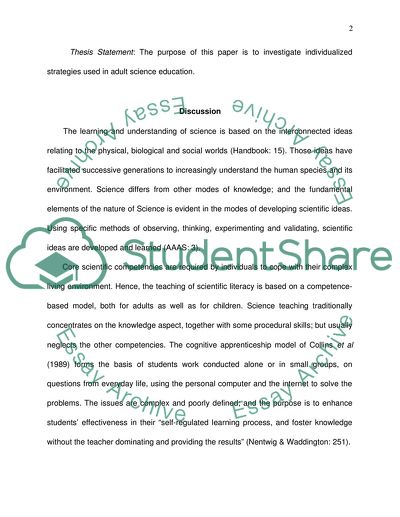Cite this document
(Science Education Strategies for Adult Learners: Ten Important Research Paper, n.d.)
Science Education Strategies for Adult Learners: Ten Important Research Paper. Retrieved from https://studentshare.org/education/1721339-individualized-adult-science-education-strategies
Science Education Strategies for Adult Learners: Ten Important Research Paper. Retrieved from https://studentshare.org/education/1721339-individualized-adult-science-education-strategies
(Science Education Strategies for Adult Learners: Ten Important Research Paper)
Science Education Strategies for Adult Learners: Ten Important Research Paper. https://studentshare.org/education/1721339-individualized-adult-science-education-strategies.
Science Education Strategies for Adult Learners: Ten Important Research Paper. https://studentshare.org/education/1721339-individualized-adult-science-education-strategies.
“Science Education Strategies for Adult Learners: Ten Important Research Paper”, n.d. https://studentshare.org/education/1721339-individualized-adult-science-education-strategies.


